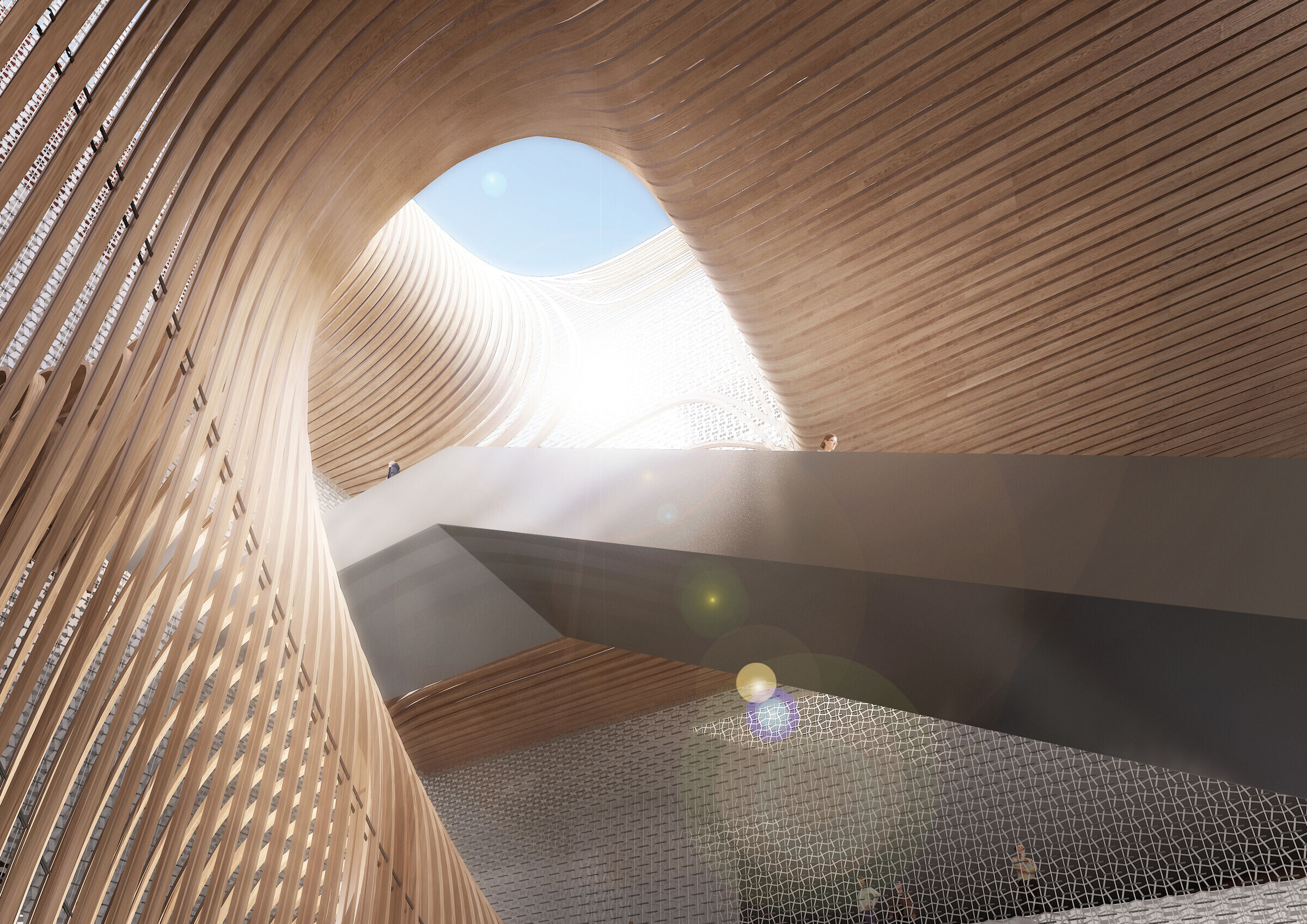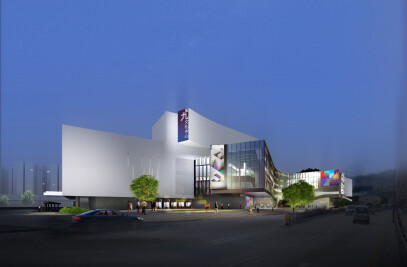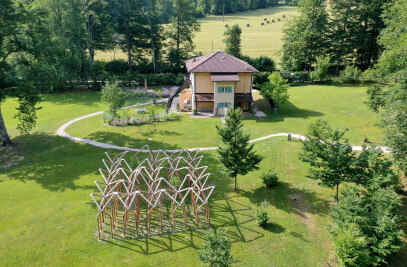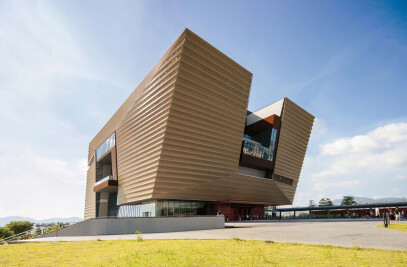RDA was one of three finalists selected out of twelve international participants in the international competition for the Guoshen Museum, part of an ongoing campaign to build new landmark cultural projects for Shenzhen. Commissioning the building, the Shenzhen Qianhai Development Corporation set three goals: the design should express the essence of traditional Chinese culture, reflect the unique character of traditional Chinese architecture, and embrace the spirit of Shenzhen as a cosmopolitan city.

With these goals, RDA submitted a design that reinterprets Chinese cultural and architectural traditions to offer a world-class contemporary museum for Shenzhen. The approach extrapolates the Chinese courtyard building—a traditional typology for public complexes—in three dimensions, creating a procession of layered spaces that blend interior and exterior spaces.
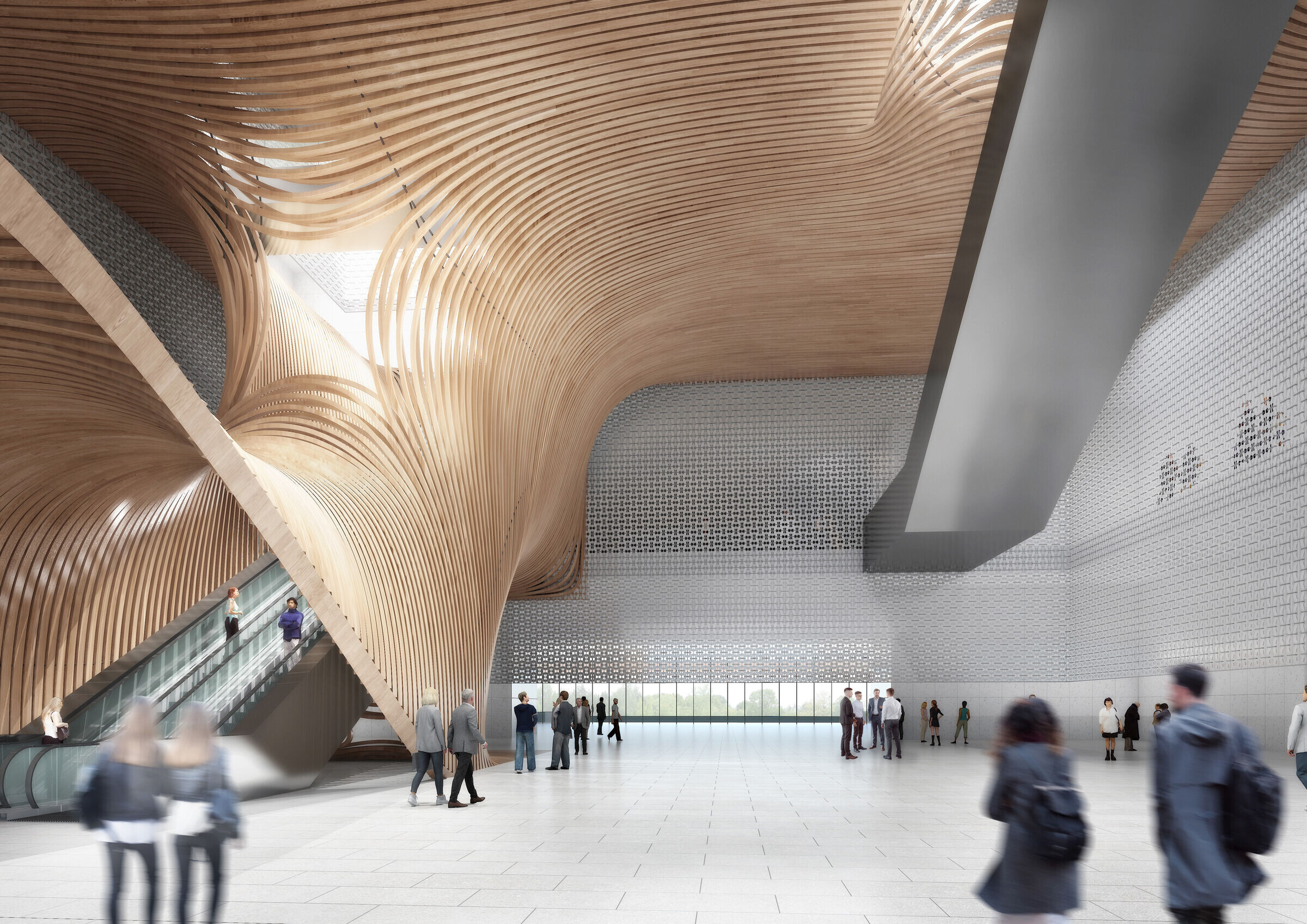
The proposed design houses the museum’s galleries in three interlinked, tube-like volumes that sweep across six stories. Suspended above the lobby and finished with scalloped walls, the galleries create a dynamic sculptural presence. They usher visitors up through the building in a sequence alternating between enclosed display areas and open gathering ones. Between each floor, the galleries spill out onto planted, open atria that overlook the lobby and orient towards different vistas of Qianhai Bay and the Shenzhen skyline. Natural light filtered through linked ‘funnels’ help to propel visitors to their upward journey to experience the joy and surprise of discovery and exploration.
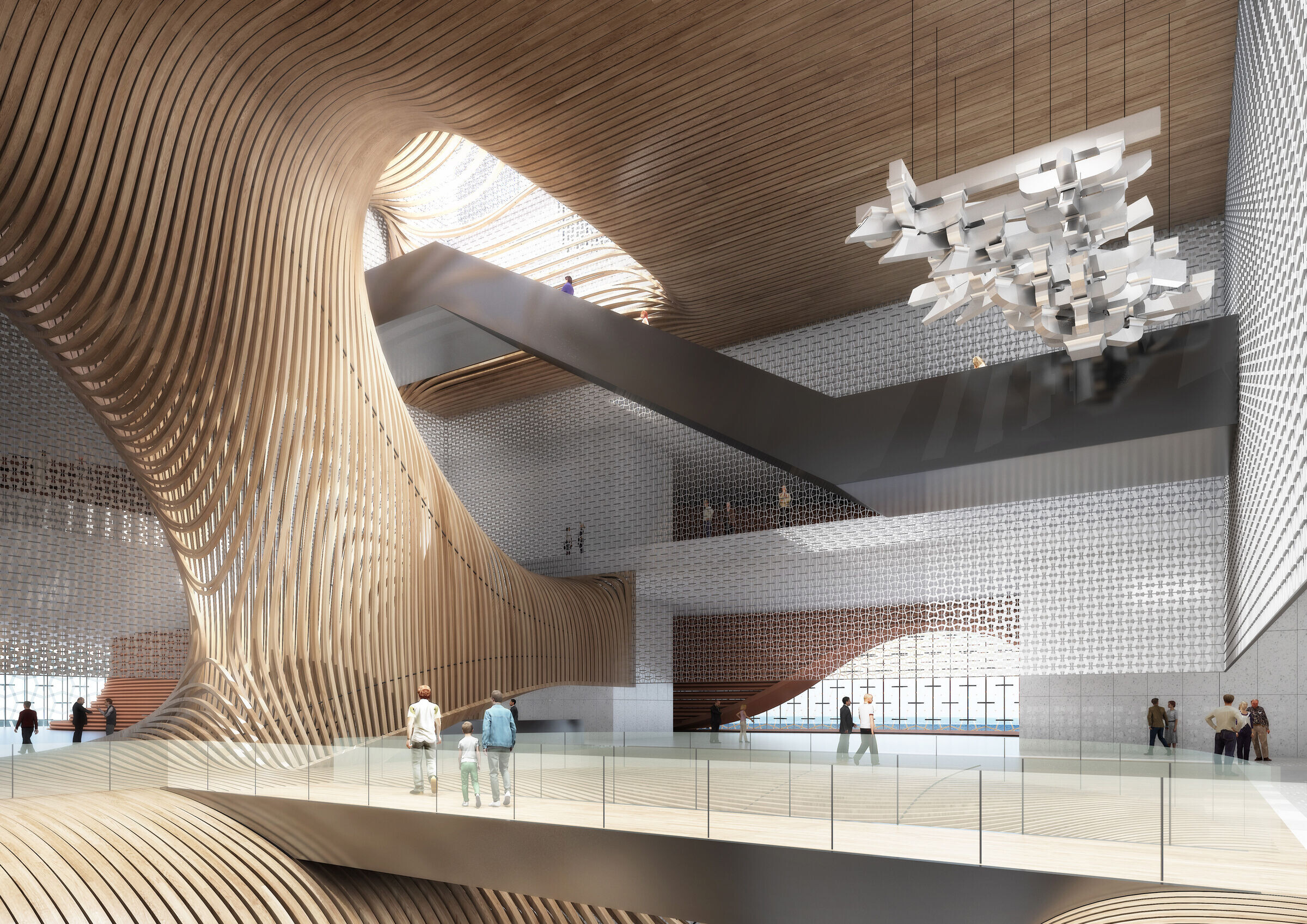
The proposed scheme calls for an active facade that responds to the climate, using a semi-transparent metal scrim that defines the edges of the building and blurs the undulating masses inside. The facade would maximize natural light and ventilation and make the museum appear from across the bay as an elegant, rectilinear volume that glows from within. By treating the galleries as a building-within-the-building, the design makes possible the multi-story, glass-lined lobby spaces while maintaining the light and environmental conditions required in the galleries. The atria that link the galleries are open 24-hours a day and double as venues for events and installations. The spatial arrangement of the museum invites visitors to meander between internal and external spaces, between nature and exhibits, recasting the experience of the traditional Chinese courtyard architecture in three dimensions.
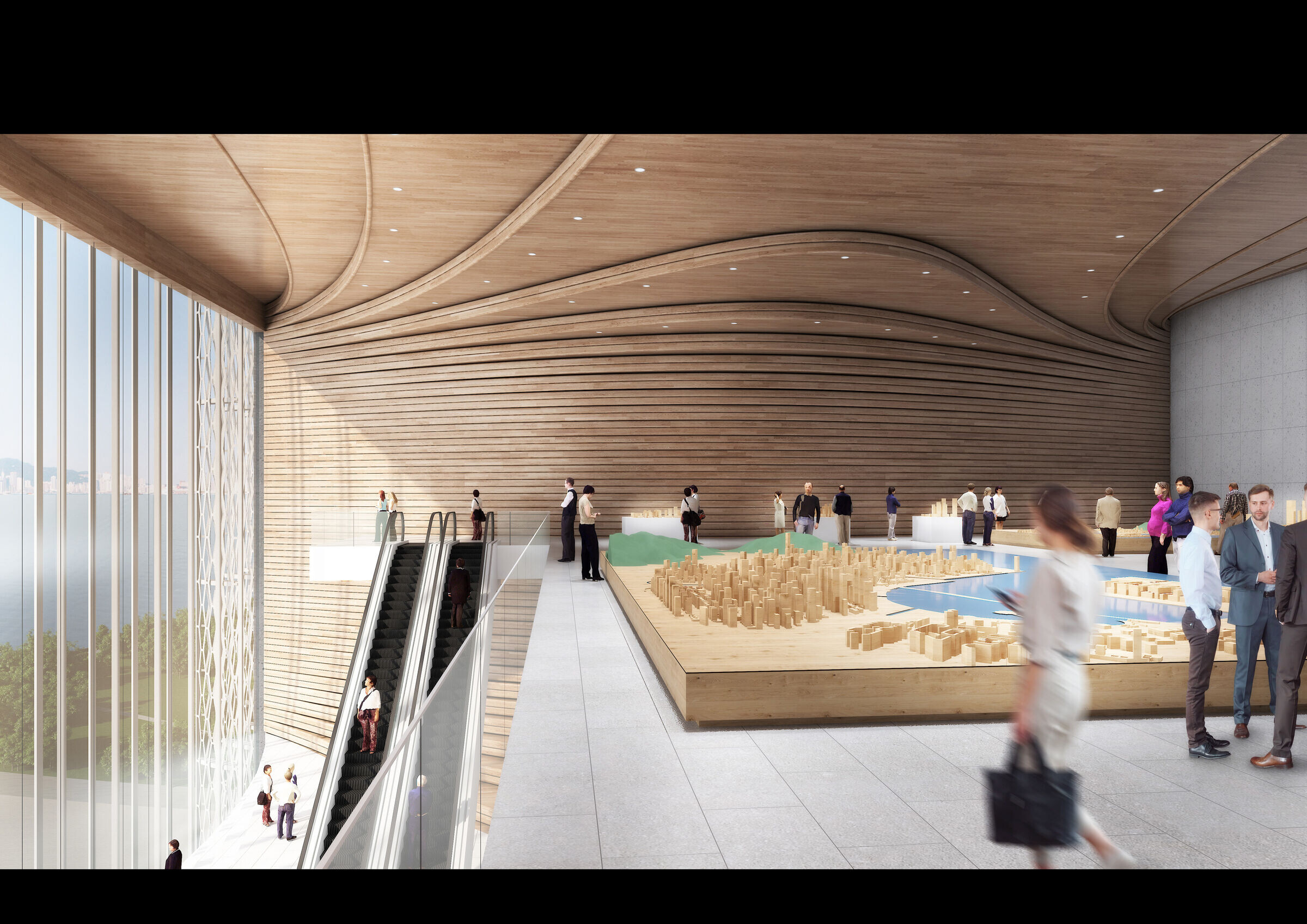
Visitors would access the museum by car or subway. Those arriving in cars would enter via an underground road that lets out into a sunken courtyard, transitioning them from the drive to the galleries inside. Those arriving by subway would pass through a sculpture-lined forecourt that offers a glimpse of the art inside. These two entry sequences converge on the second-level lobby, where the full sweep of the galleries and atria first come into view. Visually guided by a skylight, the visitors ascend via escalator to level three for the first gallery: the Chinese History Exhibition Hall.

Emerging from that space, visitors would enter an extended viewing platform framing a vista over Qianhai Bay. Here, they could enjoy the scenery, discuss the exhibition they have just seen, and prepare themselves for the shows on level 5: The Maritime Silk Road, Guangdong-Hong Kong-Macao, and Shenzhen Exhibition Halls. These cantilevered halls take an organic form with an arch-like design and are free of columns, creating an open spatial arrangement and maximizing flexibility for large-scale displays.

These halls let out onto a terrace that overlooks Qianhai Bay Park to the west. The exhibition halls on levels 6 and 7 are designed to be double-height and column-free volumes, offering curatorial flexibility for experimental and large-format shows.
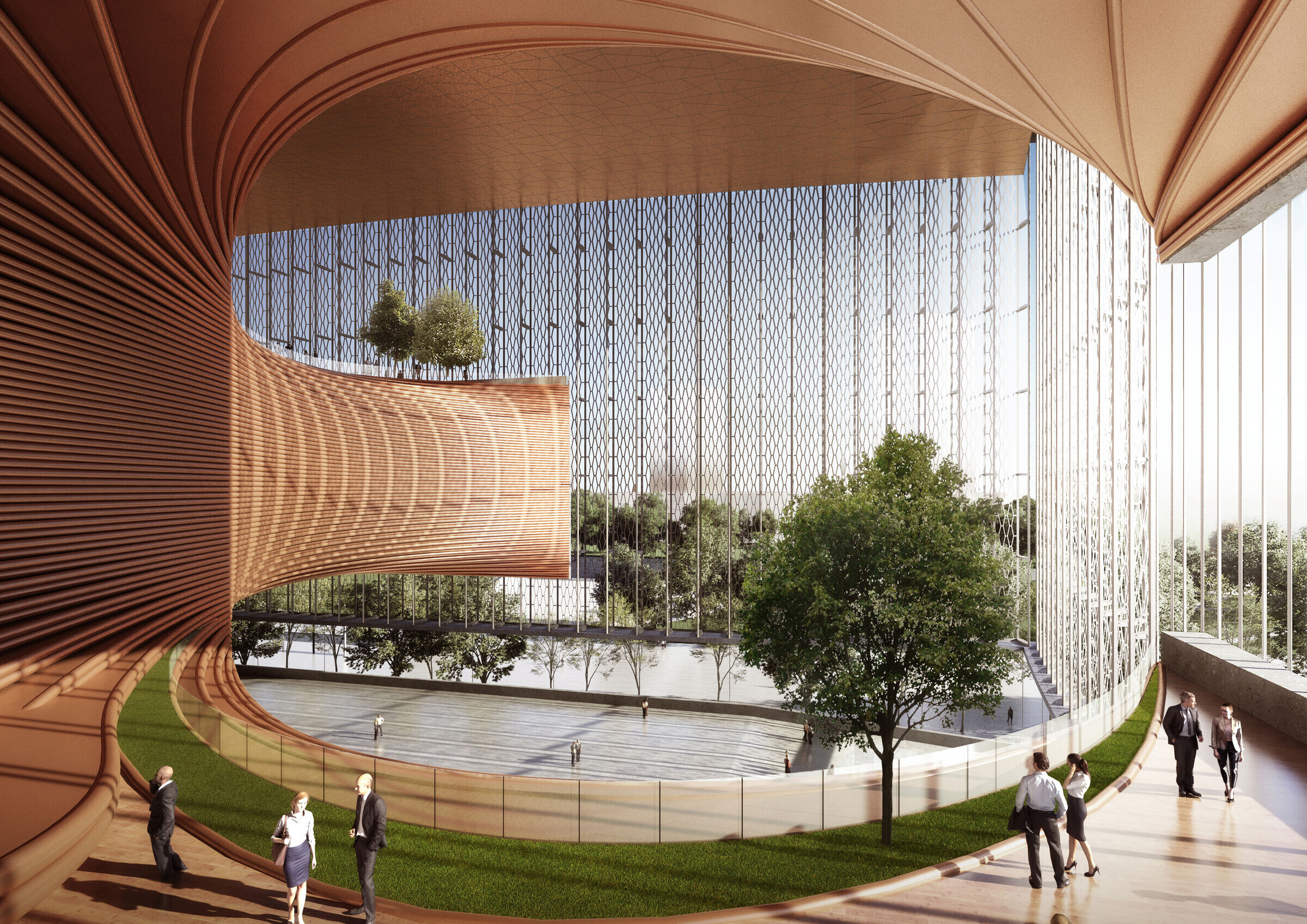
Over the past decades, Shenzhen has reinvented itself from a small town into a major cosmopolitan city and center for the arts, technology, and economy. The city has continued to attract cultural and business leaders from throughout China and around the world. The Guoshen Museum will create a world-class arts institution for the city, embracing the spirit of Shenzhen as a cosmopolitan Chinese city through its forward-looking and welcoming design rooted in Chinese cultural and spatial traditions.
